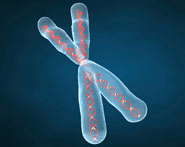


 النبات
النبات
 الحيوان
الحيوان
 الأحياء المجهرية
الأحياء المجهرية
 علم الأمراض
علم الأمراض
 التقانة الإحيائية
التقانة الإحيائية
 التقنية الحيوية المكروبية
التقنية الحيوية المكروبية
 التقنية الحياتية النانوية
التقنية الحياتية النانوية
 علم الأجنة
علم الأجنة
 الأحياء الجزيئي
الأحياء الجزيئي
 علم وظائف الأعضاء
علم وظائف الأعضاء
 الغدد
الغدد
 المضادات الحيوية
المضادات الحيوية|
Read More
Date: 8-12-2020
Date: 8-12-2015
Date: 8-12-2020
|
When an antibody is labeled with a fluorescent dye (eg, fluorescein, rhodamine), the presence of the antibody can be observed using an ultraviolet light source in a fluorescence microscope. This assay system can be applied in two ways: a direct immunofluorescence assay or an indirect immuno- fluorescence assay.
In the direct immunofluorescence assay, a known specific antibody is labeled with a fluorescent dye. A specimen with unknown organisms is added to a slide and the slide is incubated with the fluorescein-labeled specific antibody (eg, antistreptococcal antibody). The slide is washed and evaluated under a fluorescence microscope. If the unknown specimen contains streptococcus organisms, they will appear green.
In the indirect immunofluorescence assay, a two-step procedure is used to detect the presence of organism-specific antibodies (such as treponemal antibodies) in a serum specimen. First, a known antigen (treponema) is attached to a slide. A serum sample is incubated with the slide, the sample is removed, the slide is washed, and a second fluorescein-labeled anti-immunoglobulin is added. The slide is washed and examined under a fluorescence microscope.
If the patient's serum contained antitreponemal antibodies, the organism will appear green under the fluorescence microscope. Historically this assay has been used to detect antibodies to certain microorganisms (eg, T pallidum) and is the standard procedure for the detection of autoantibodies in autoimmune diseases (eg, antinuclear antibodies).



|
|
|
|
كل ما تود معرفته عن أهم فيتامين لسلامة الدماغ والأعصاب
|
|
|
|
|
|
|
ماذا سيحصل للأرض إذا تغير شكل نواتها؟
|
|
|
|
|
|
|
جامعة الكفيل تناقش تحضيراتها لإطلاق مؤتمرها العلمي الدولي السادس
|
|
|